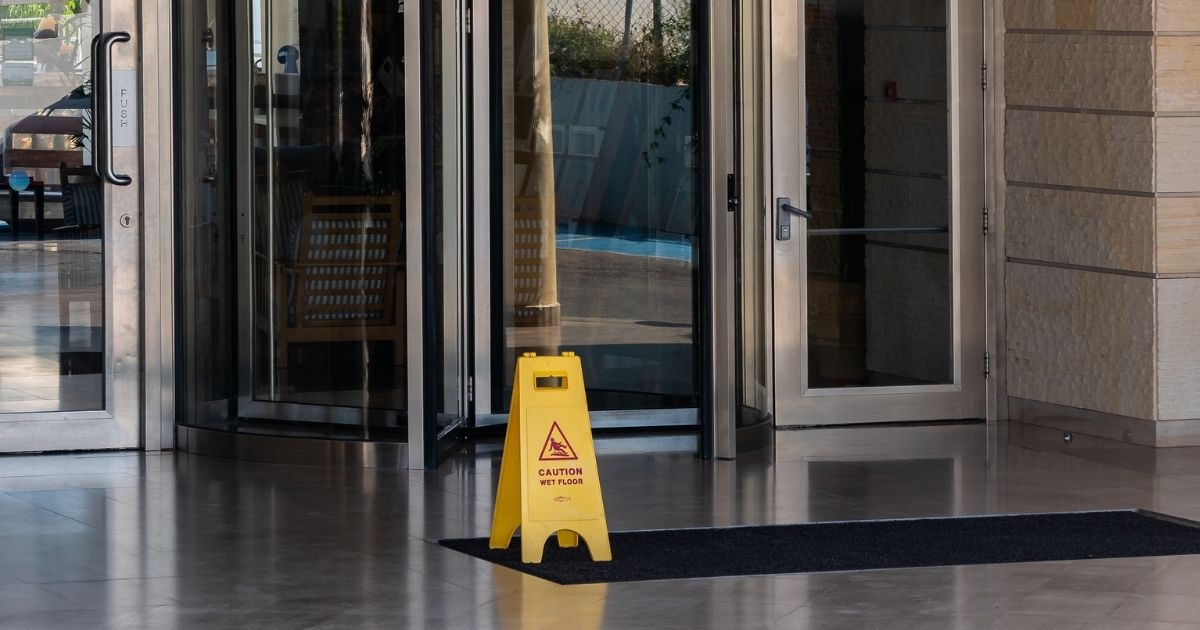Slip and fall accidents are one of the leading causes of serious injuries. People who have a slip and fall accident often suffer from broken bones, torn ligaments and muscles, and traumatic brain injuries (TBIs). In many cases, falls are directly caused by poorly maintained properties.
There are common slip, trip, and fall hazards to look out for. It is important to always be diligent when walking, but a property owner also has a responsibility to make sure their premises is safe.
Falling Hazards at Retail Stores
In many cases, people are injured due to falling at a retail establishment. Stores that sell items on shelves are prone to people slipping, tripping, and falling due to dangerous conditions on the floors. One of the main reasons for this is that customers are not watching the floor, they are looking at the products on the shelves.
The products on the shelves are designed to catch the attention of the customers, but distractions can also cause accidents. This is why owners and managers of retail establishments have to be extra vigilant in maintaining a safe environment for their customers. Listed below are common slip and fall hazards at retail stores.
Slippery Substances: When wet, slippery substances are spilled on the floor, it is very dangerous for customers. Food items spilled in grocery stores cause many slip and fall accidents. Grocery store employees have to keep a sharp lookout for spilled items and clean them up immediately. Also, some substances will be hard to see. Most grocery store floors are covered in slick tile, and the combination of these floors with wet substances can causes dangerous slip and fall accidents.
Stacked Boxes: Most customers in retail stores will be looking at the products on the shelves or clothes on the racks, not what is on the floor. When the store keeps boxes stacked in the aisles at foot level, many people may not notice them. Store employees have to be diligent in keeping aisles clear of these items.
Uneven Flooring: Often, stores will place mats or carpets on their floors for many reasons, including protecting the floors or even making sure the floor is not slippery for their customers. However, mats or carpets can be uneven and not fastened or taped down. There are many instances of customers tripping over edges of mats and carpets that have been kicked up or are uneven. Store managers and employees have to be careful and check these mats on a regular basis. Workers should tape down the edges that might be sticking up.
Cords and Cables: Having loose electrical cords running along the floors can be a tripping hazard. If it is necessary to have electrical extension cords or cables running on the floor, they should be taped down so that a customer cannot get their foot caught in them and fall.
Overly Stocked Shelves: When shelves are too fully stocked with merchandise, there is a propensity for items to fall off the shelf and onto the floor, creating a slip and fall hazard. Shelves should not be overly packed with products.
Congested Aisles: When customers have to walk through narrow, crowded, and congested aisles, there is a chance that people will trip and fall over items. Packing products along narrow aisles is dangerous. Customers need an adequate amount of space to safely maneuver through a store.
Structural Defects: Structural defects are dangerous conditions that are part of the building, such as broken or uneven stairs, uneven or cracked flooring, or steps that are difficult to notice.
Poor Lighting: Many retail establishments are too dark and have poor lighting. If customers have difficulty seeing hazards on the floor, there will be more accidents and injuries.
Sidewalk Slip and Fall Hazards
People are injured quite often while walking on sidewalks. In New Jersey, private and commercial property owners have to keep and maintain safe sidewalks. Listed below are common sidewalk slip and fall hazards.
Uneven Sidewalks: Concrete sidewalks tend to contract and expand because of the weather, including the dirt underneath the sidewalk. This contraction can cause portions of the sidewalk to raise or lower in height, causing an uneven walkway. This is a clear tripping hazard and can cause a serious injury. By law, property owners are required to maintain their sidewalks to make sure they are fairly even and not hazardous. If someone trips and falls on an uneven sidewalk, the property owner can be held liable for damages.
Snow and Ice Accumulation: A serious problem is the accumulation of snow and ice on sidewalks and walkways. Property owners are obligated by law to make sure their sidewalks, walkways, and parking areas are reasonably cleared of ice and snow at all times. Most municipalities have ordinances that require property owners to clear their sidewalks within a certain period of time after the snow stops falling or after a storm is over. If someone slips and falls on accumulated ice or snow on a sidewalk, then the property owner may be held responsible for damages, including medical bills, wage loss, and pain and suffering in certain circumstances.
It is important to know the most common slip and fall hazards and what to do when encountering them. If one is seriously injured in a slip and fall accident, it is wise to speak to a lawyer to discuss legal options.
Mount Laurel Slip and Fall Lawyers at the Law Office of David S. Rochman Defend Victims Against Negligent Property Owners
A serious slip and fall injury can greatly impact your life. If you were recently injured in a slip and fall accident, you may have questions about medical bills, lost wages, and damages for pain and suffering. The Mount Laurel slip and fall lawyers at the Law Office of David S. Rochman are ready to address your concerns. Call us at 856-751-2345 or contact us online for a free consultation. Located in Mount Laurel, New Jersey, we serve clients throughout the surrounding areas.


